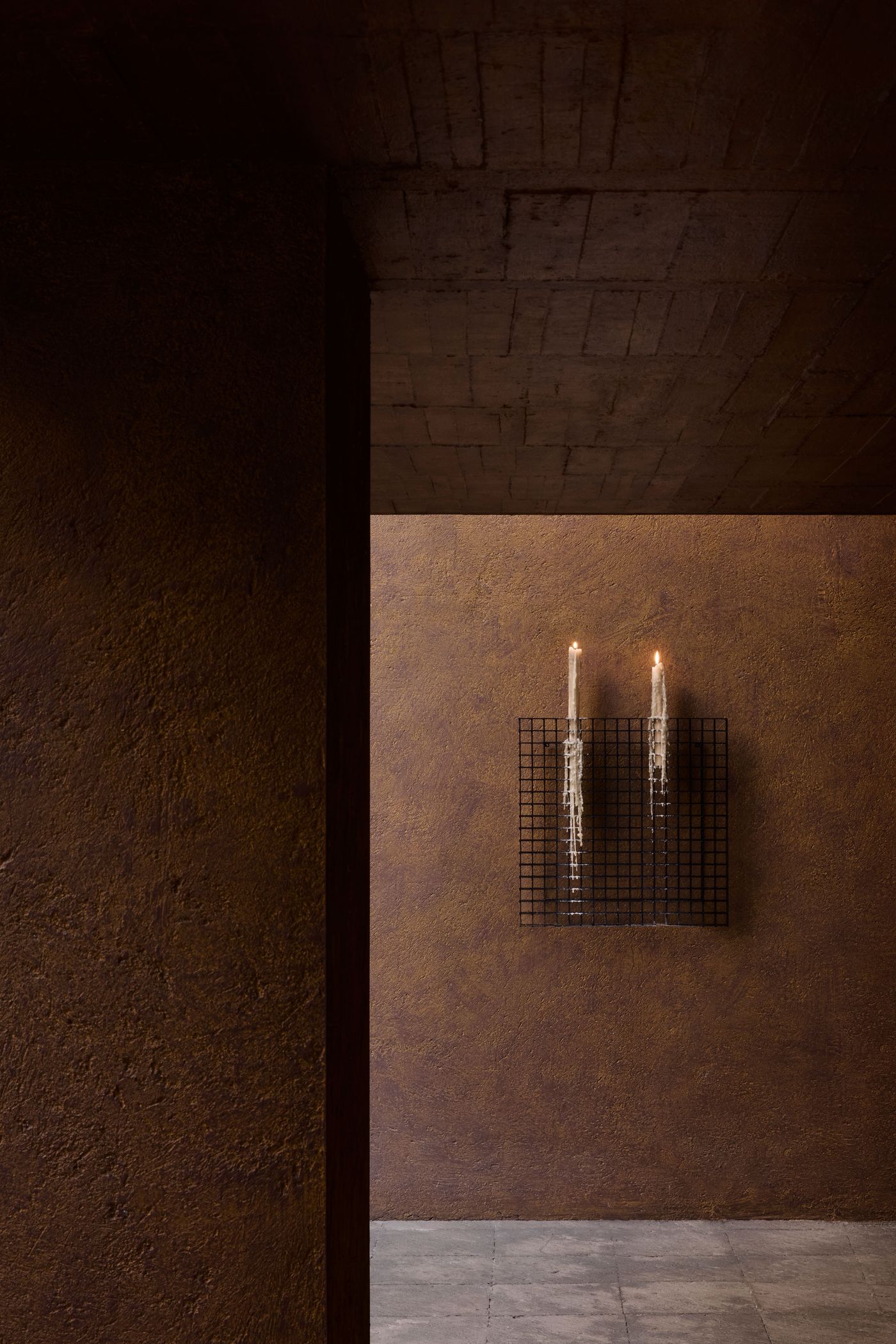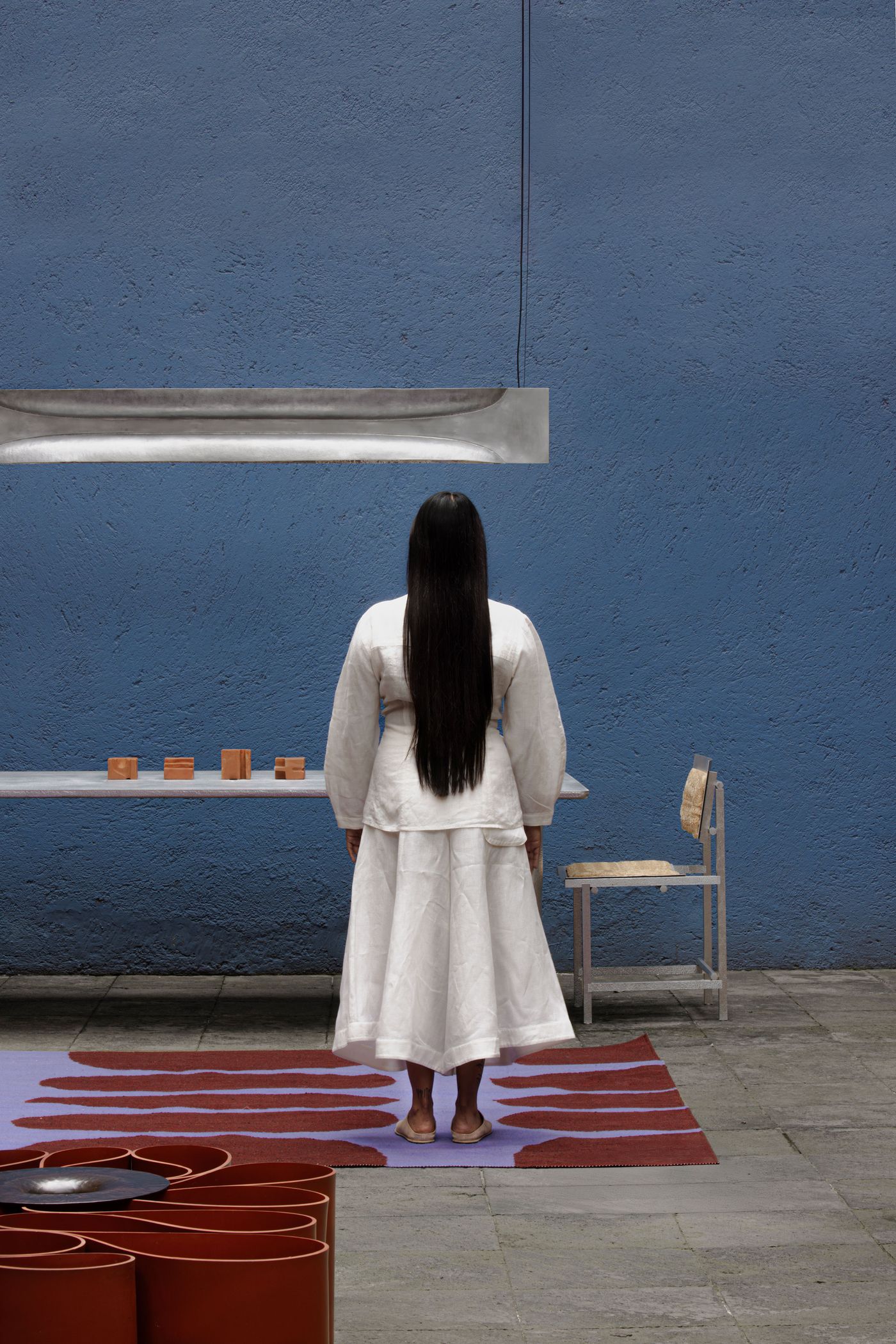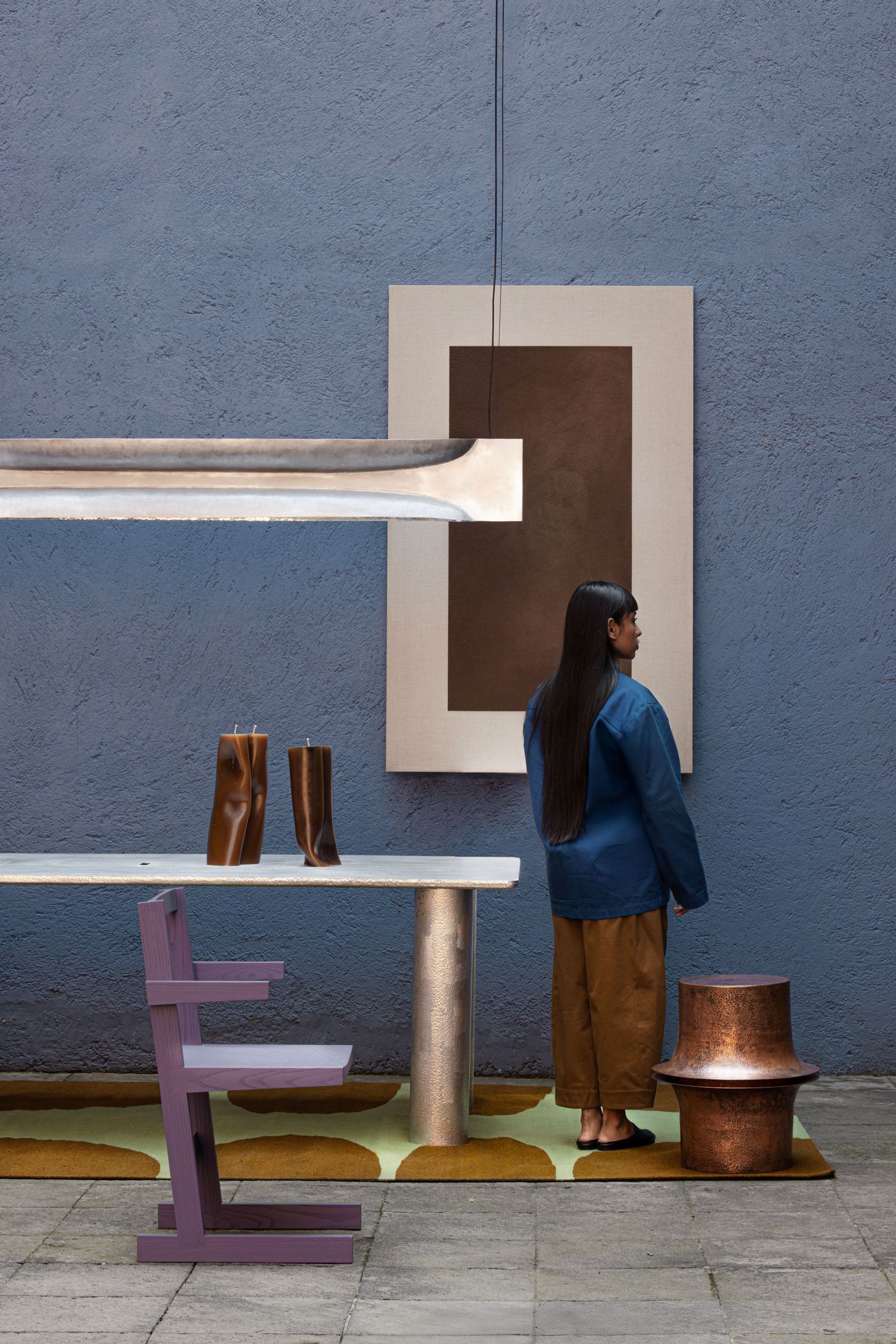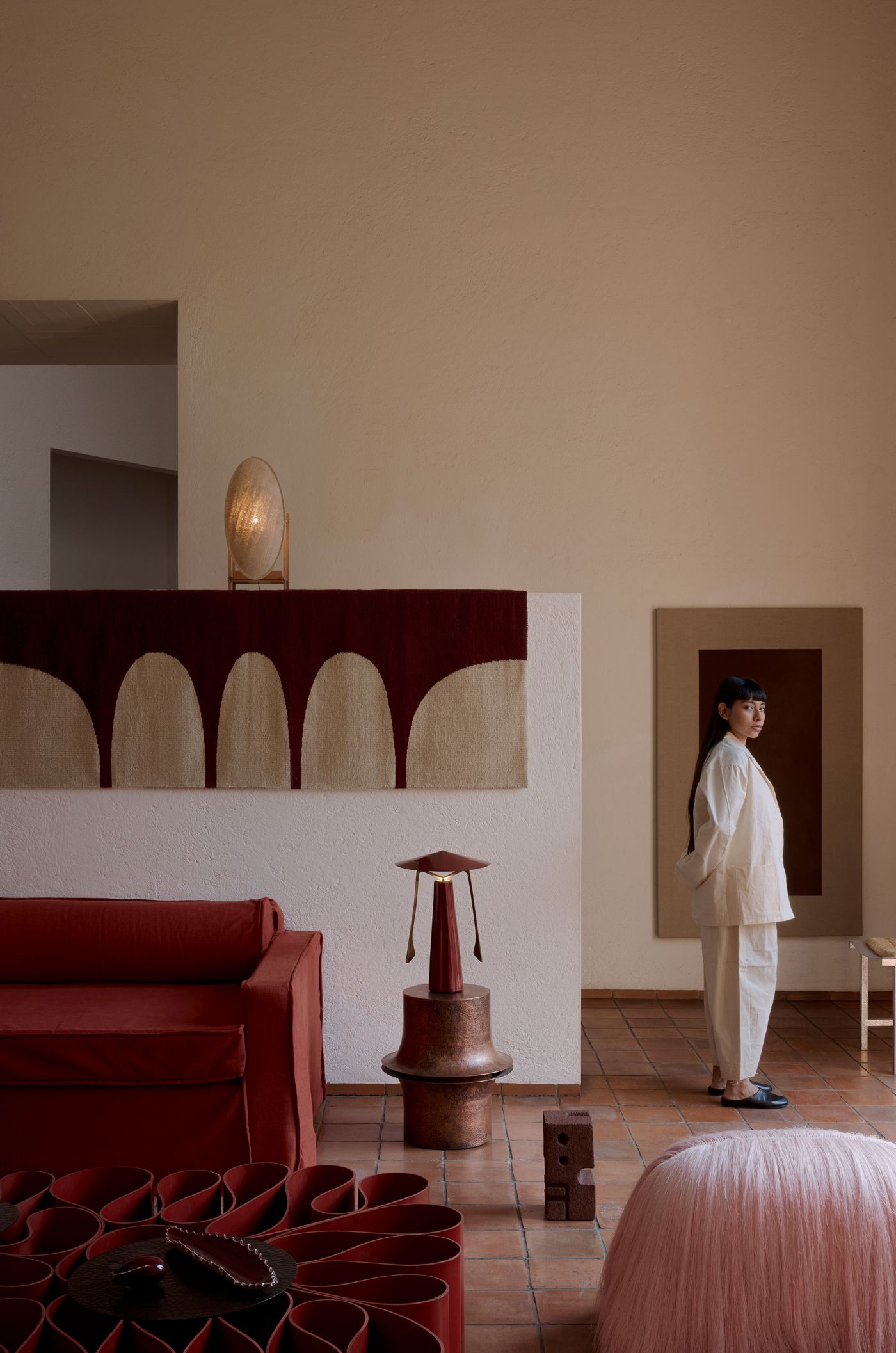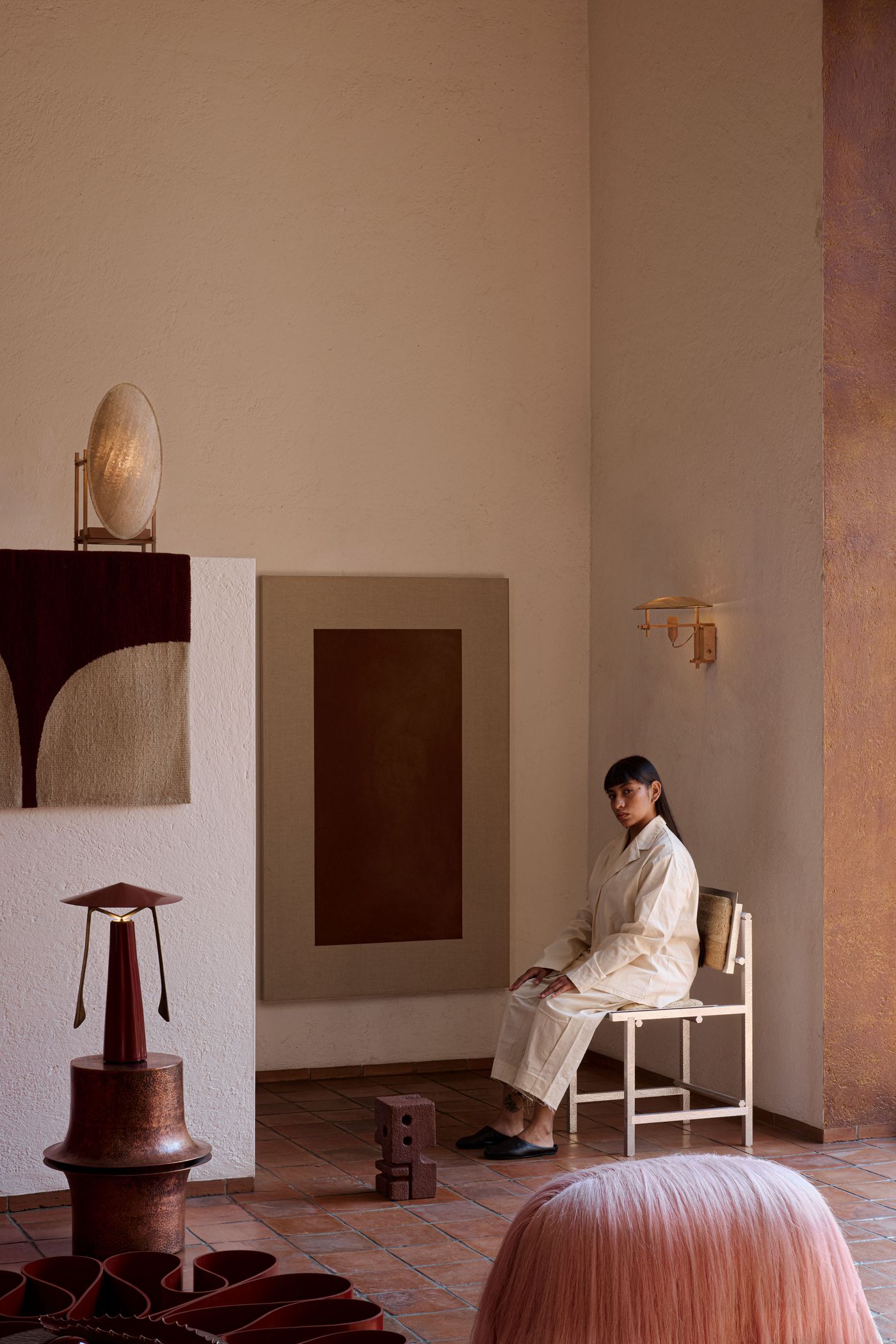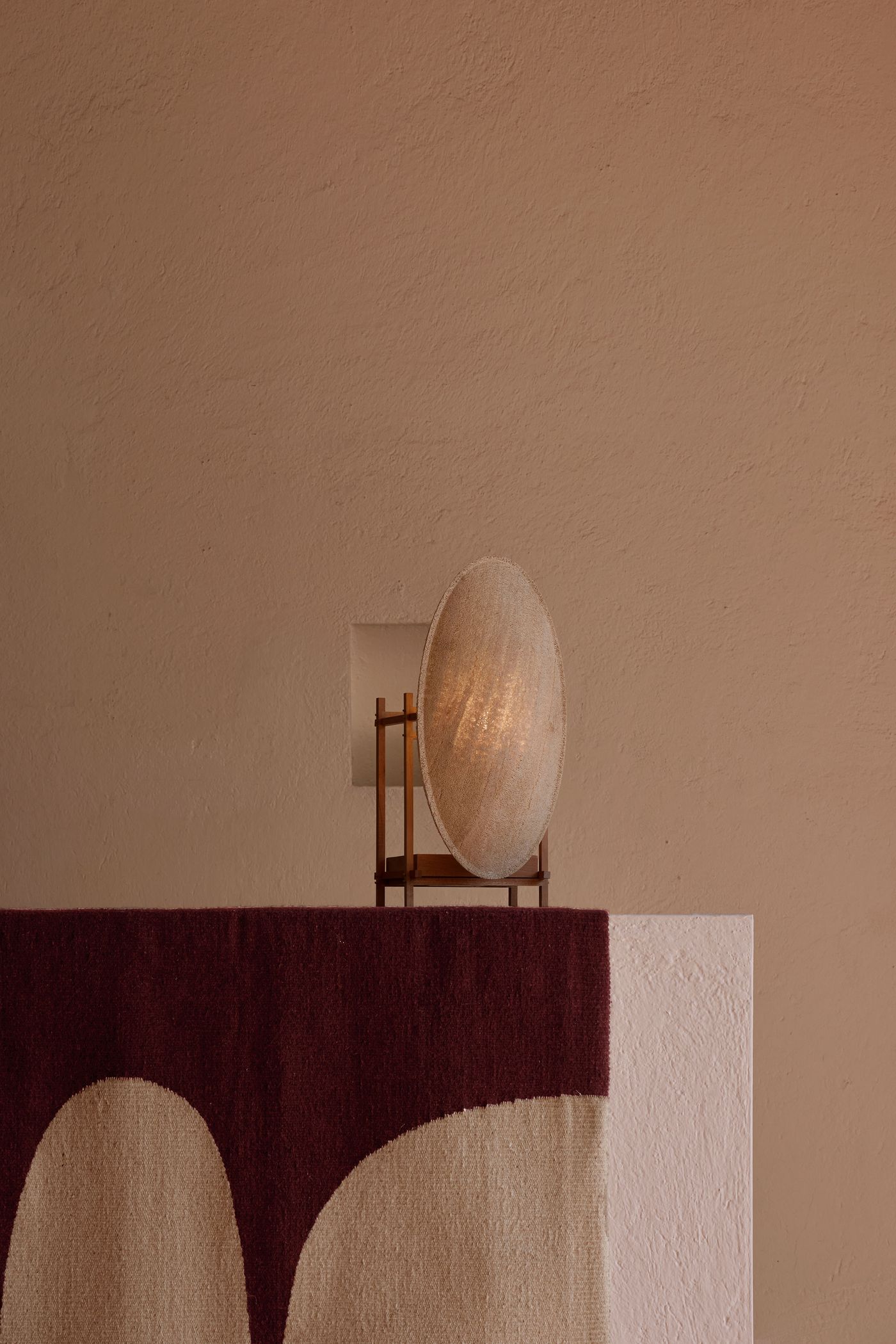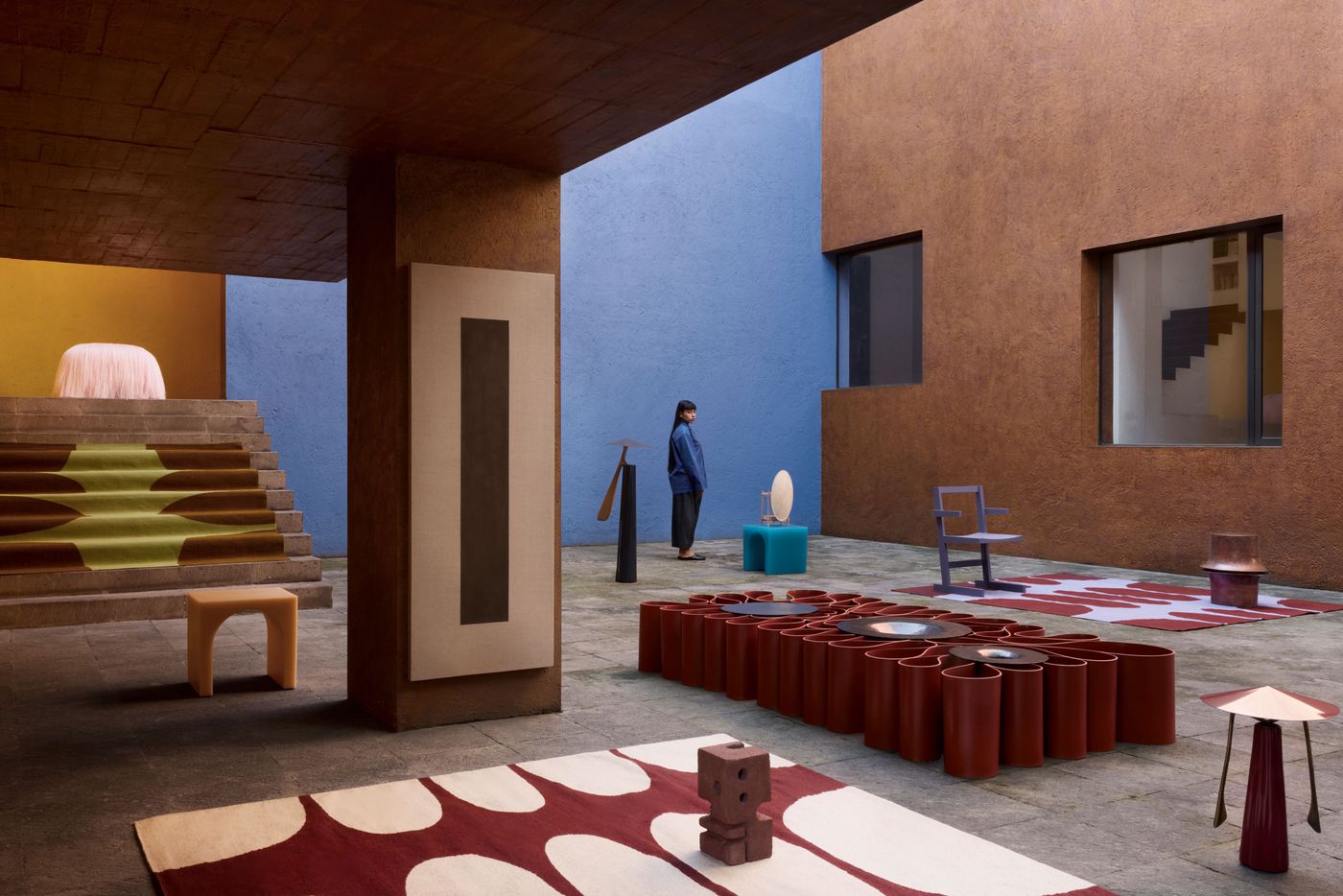
A House as a Lens: Alejandro Ramirez Orozco’s Photographic Exploration of Casa del Atrio
Words by Yatzer
Location
Mexico City, Mexico
A House as a Lens: Alejandro Ramirez Orozco’s Photographic Exploration of Casa del Atrio
Words by Yatzer
Mexico City, Mexico
Mexico City, Mexico
Location
Architecture and design are inseparable, with one framing the other, shaping experiences through both form and function. This intrinsic relationship shapes the foundation of Mexican photographer Alejandro Ramirez Orozco’s latest project –unveiled during Mexico City Art Week 2025 (February 3 – 9, 2025), the photographic series explores how contemporary Mexican design interacts with Casa del Atrio, an iconic residence in Mexico City constructed by the often-overlooked modernist architect Antonio Attolini Lack. showcasing 25 pieces by 13 contemporary designers, CASA DEL ATRIO – The Container and What it Contains, transforms Attolini’s architectural masterpiece into a scenographic backdrop that elevates the photographed works beyond mere objects, turning them into integral components of a living, spatial dialogue.
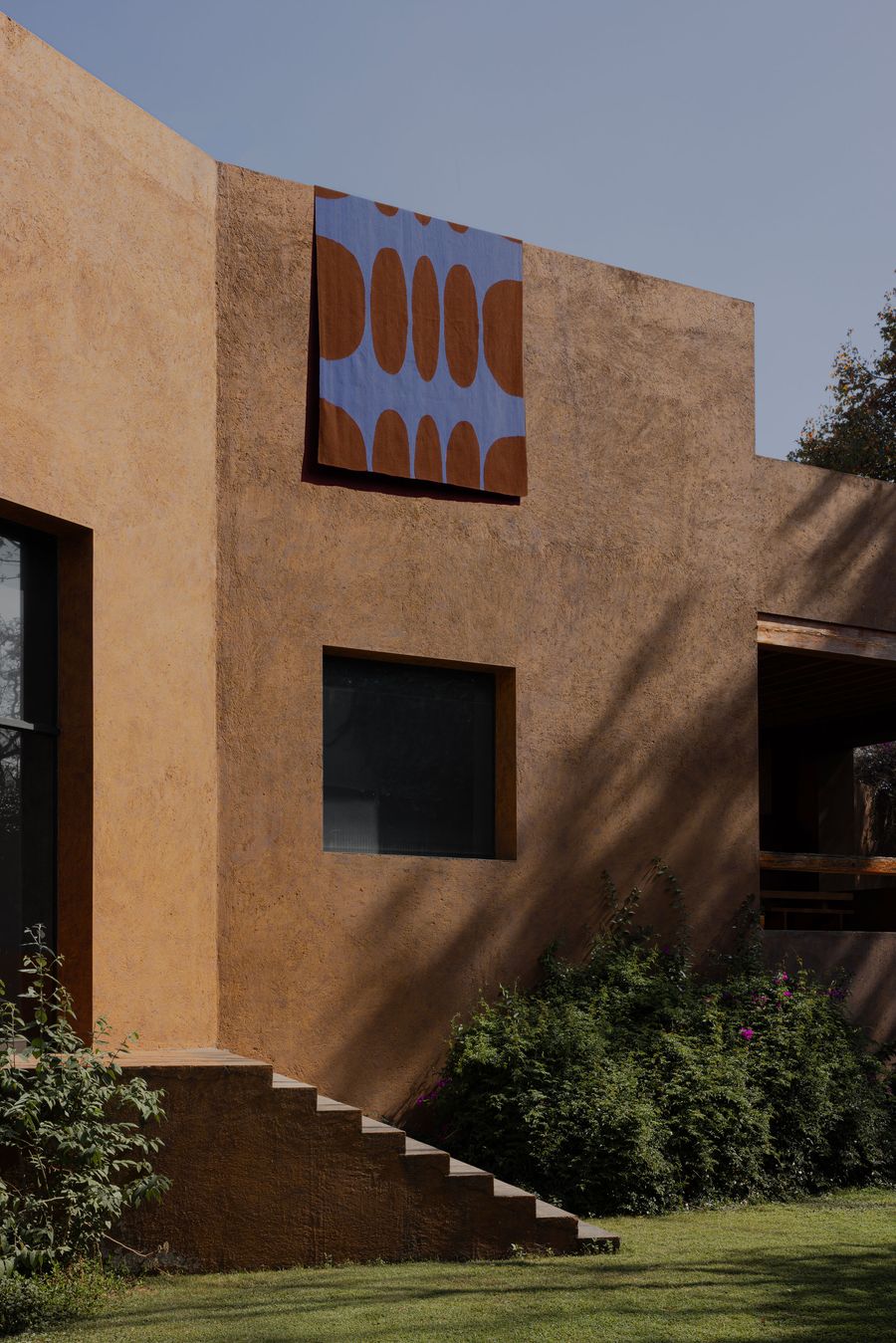
Photography and creative direction by Alejandro Ramirez Orozco.
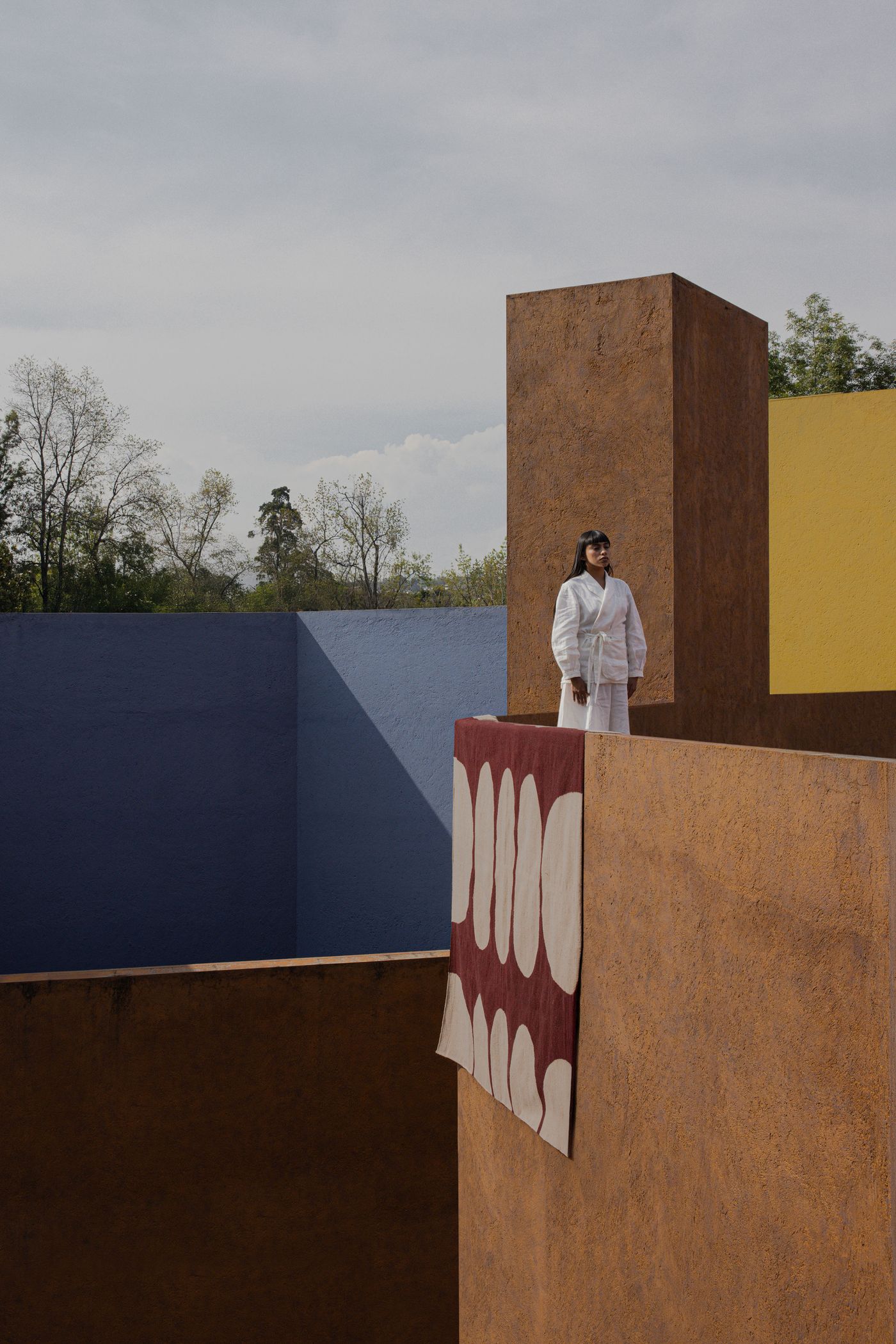
Photography and creative direction by Alejandro Ramirez Orozco.

Photography and creative direction by Alejandro Ramirez Orozco.
Born in 1931 in Ciudad Juárez, Antonio Attolini Lack emerged in the mid-20th century as part of the generation that redefined Mexican modernism. While his early works echoed the crisp purity of the International Style, in the late 1960s he adopted a more sculptural, site-sensitive approach. Influenced by Mexico’s colonial cloisters and artisanal traditions, this later phase saw him embracing mass, colour, and light with masterful restraint. Undoubtedly informed by the work of his compatriot Luis Barragán, Attolini’s spaces were monastic yet rich, rigorously geometric and yet deeply emotive.
Built in 1990 in Mexico City’s San Ángel neighborhood, Casa del Atrio is a defining example of Attolini’s mature style. It’s a house that breathes with large openings leading to secluded gardens, patios, and a central atrium, which the house takes its name from. The result is an ever-shifting interplay of light and shadows, made all the more dramatic by the ochre, slate blue, and yolk yellow-washed walls whose hue shifts throughout the day. Attolini was an architect who believed in shaping every aspect of a space, down to the furniture and even the door handles, evident in Casa del Atrio’s lacquered pine cabinetry, sculptural fireplaces, and the built-in bookshelves. Combining spatial drama with intimacy, the house provided the ideal setting for Ramirez Orozco’s vision: a photographic exploration of contemporary Mexican design within a space already charged with artistic intention.
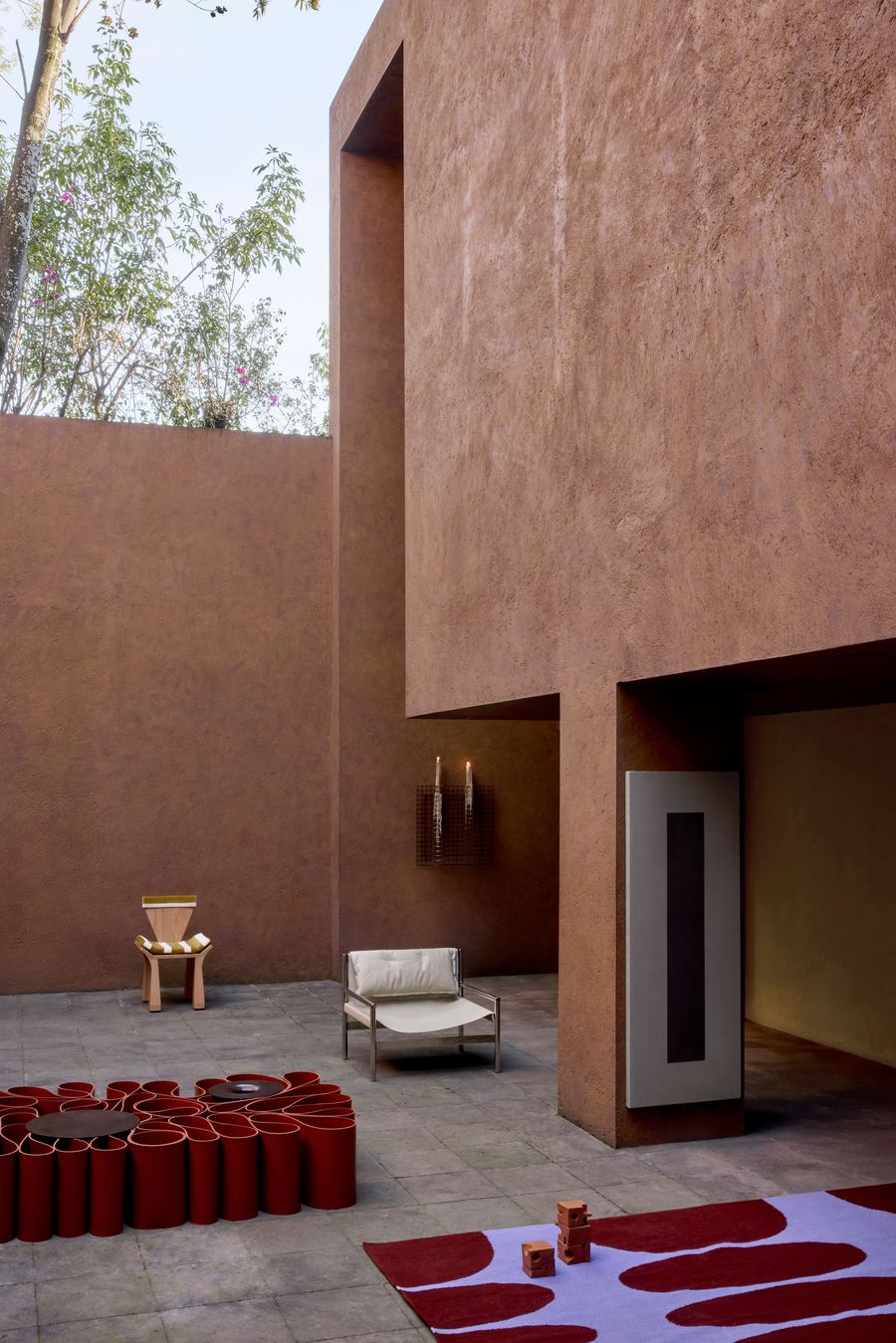
Photography and creative direction by Alejandro Ramirez Orozco.

Photography and creative direction by Alejandro Ramirez Orozco.
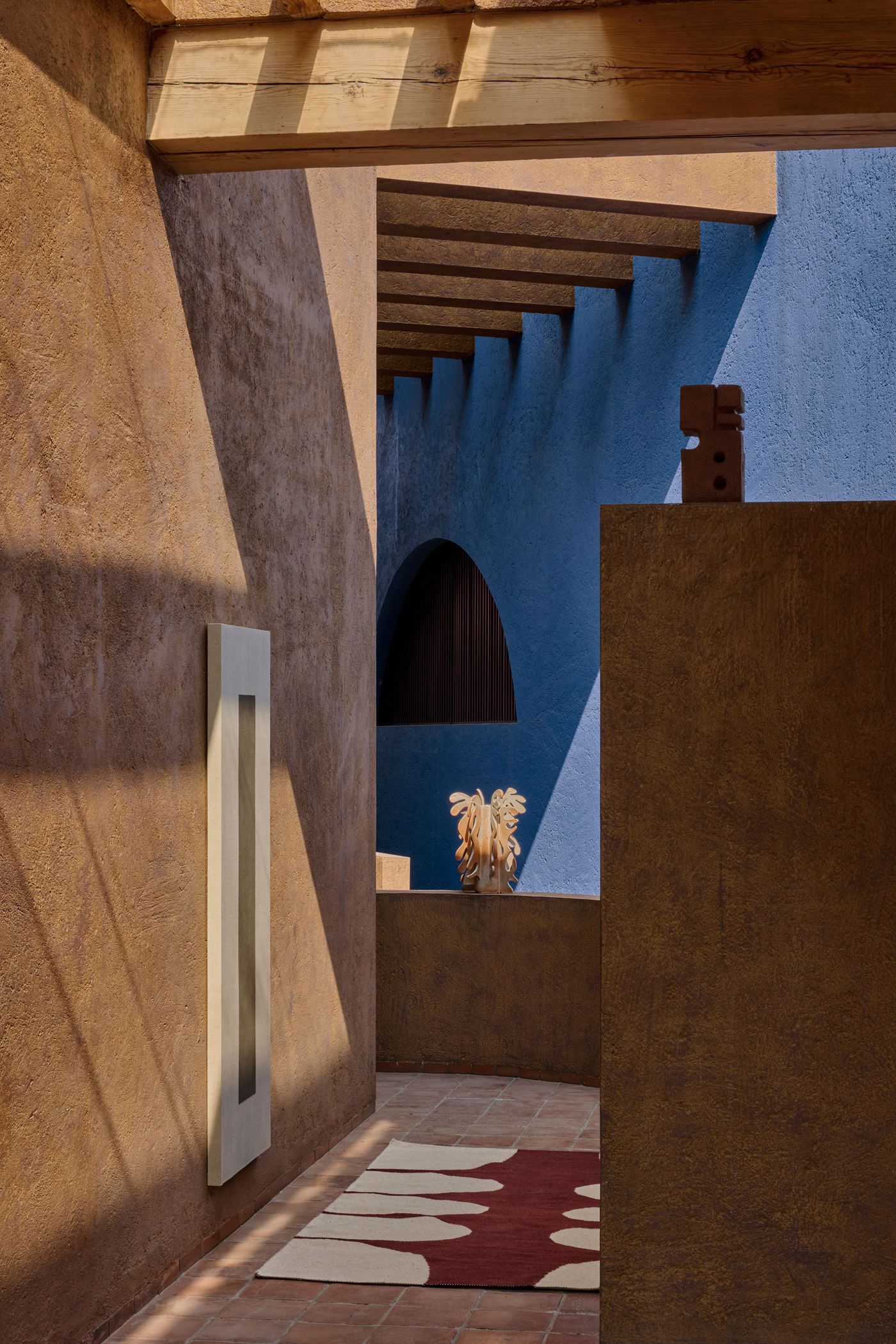
Photography and creative direction by Alejandro Ramirez Orozco.
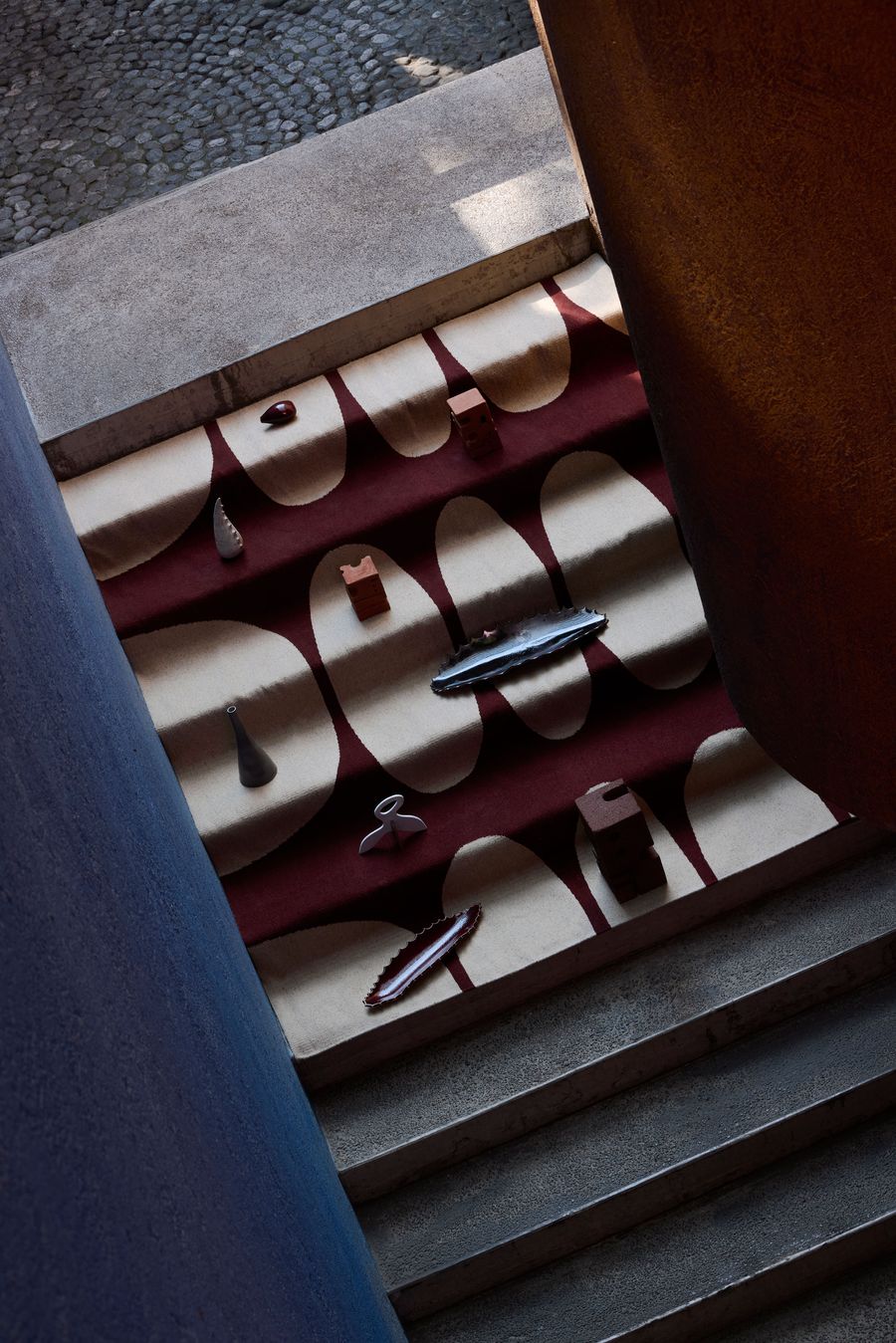
Photography and creative direction by Alejandro Ramirez Orozco.
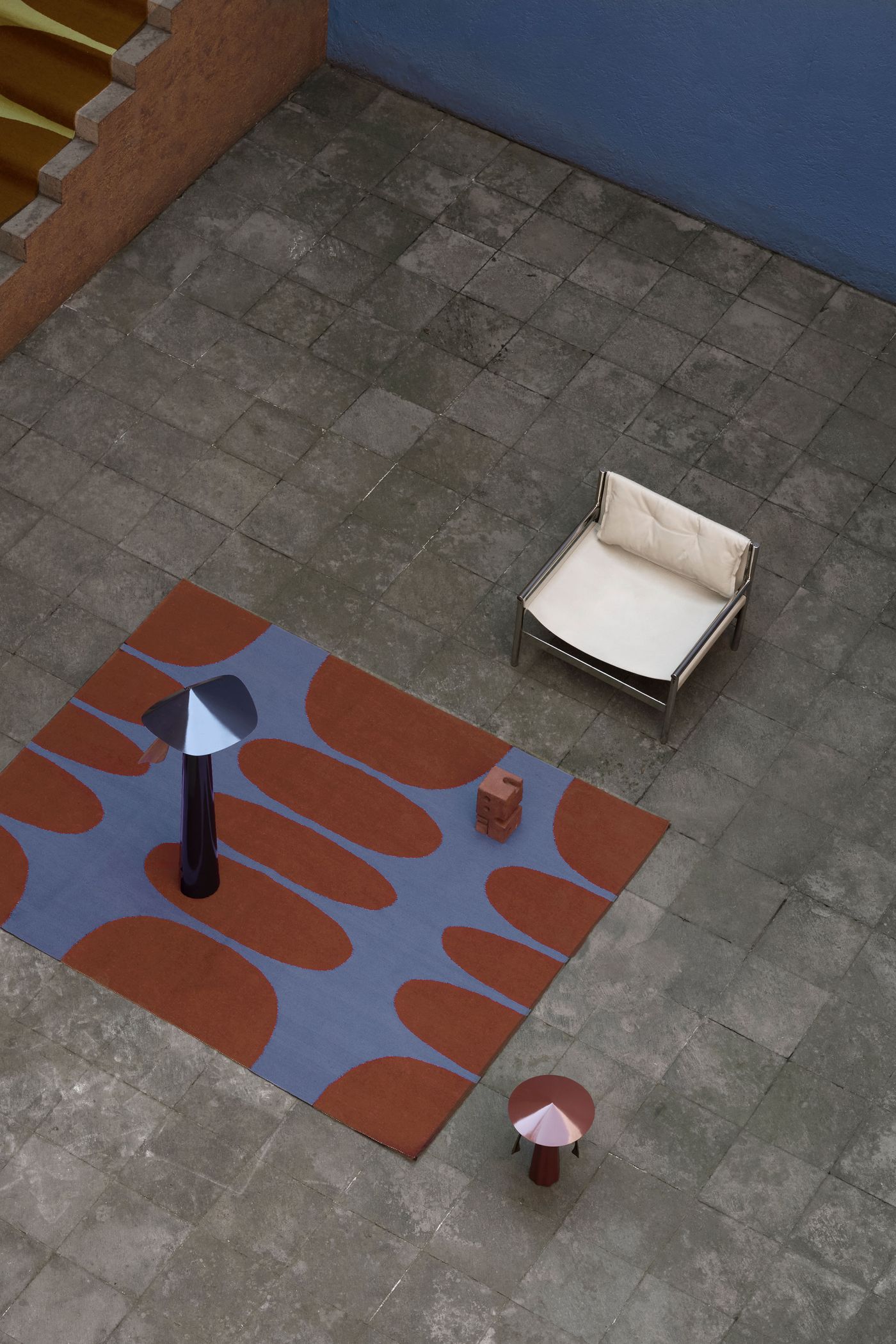
Photography and creative direction by Alejandro Ramirez Orozco.
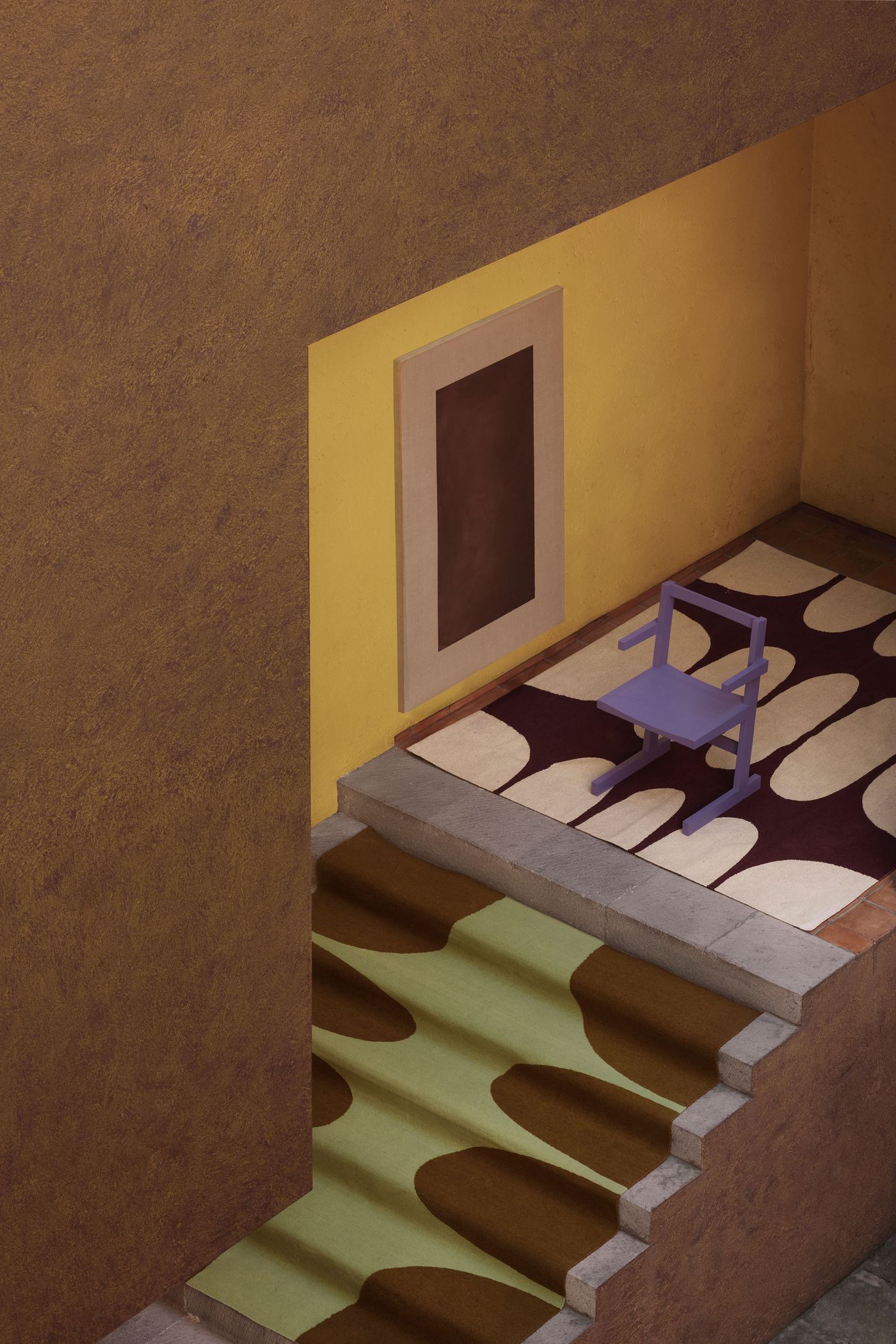
Photography and creative direction by Alejandro Ramirez Orozco.
Comprising a diverse range of works, from functional furniture to sculptural objects and two-dimensional pieces—the 25 pieces that Ramirez Orozco selected are unified by their material richness and craftsmanship. Some were designed specifically for the house, responding to its geometry and colour palette, while others were adapted from existing prototypes such as Eduardo Altamirano’s Atrium Chair which is an iteration from a 2021 design. Crafted from ash wood stained in a violet hue, the slender chair was inspired by cantilever construction systems as a reflection of Attolini’s pursuit of essentiality.

Photography and creative direction by Alejandro Ramirez Orozco.
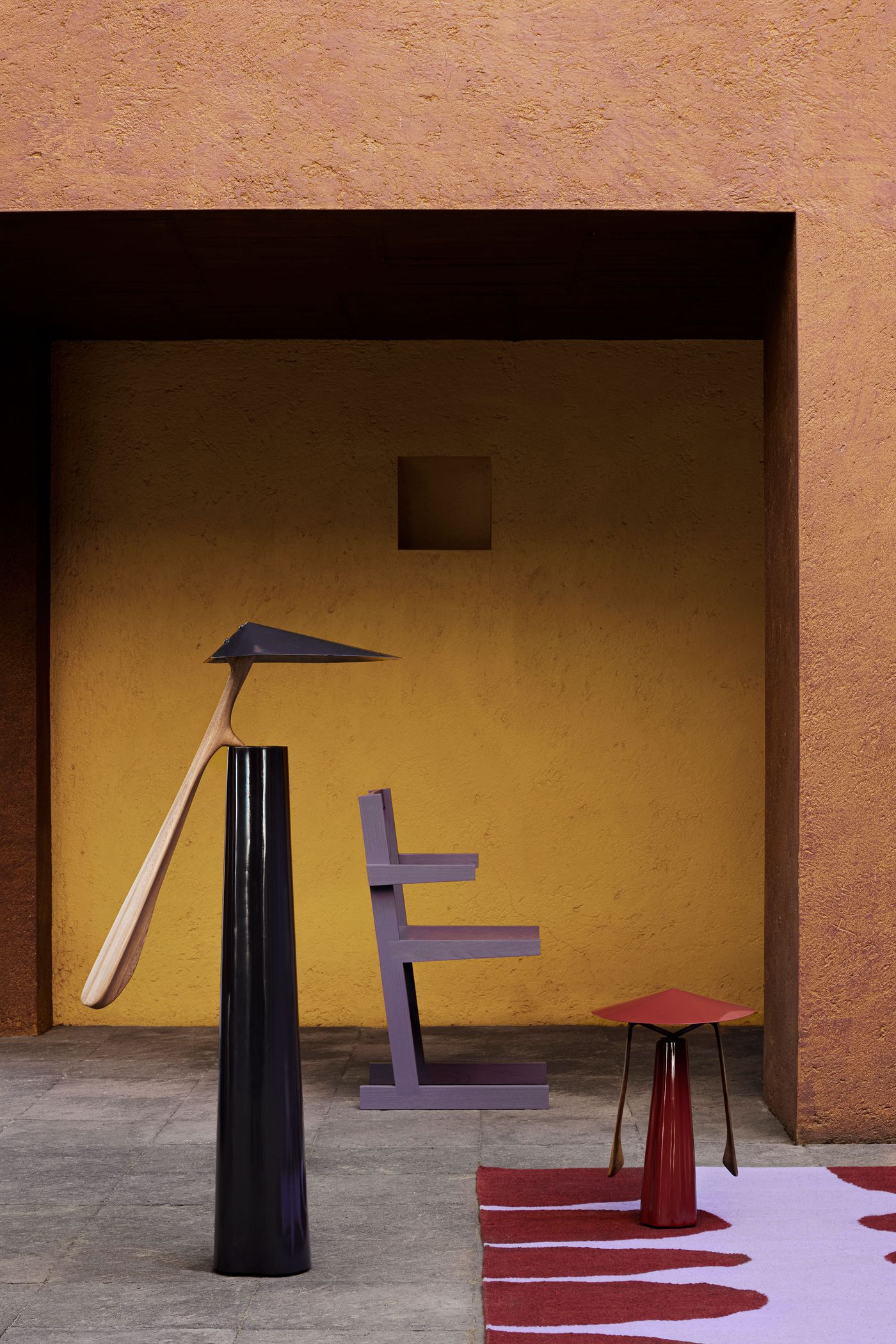
Photography and creative direction by Alejandro Ramirez Orozco.

Photography and creative direction by Alejandro Ramirez Orozco.
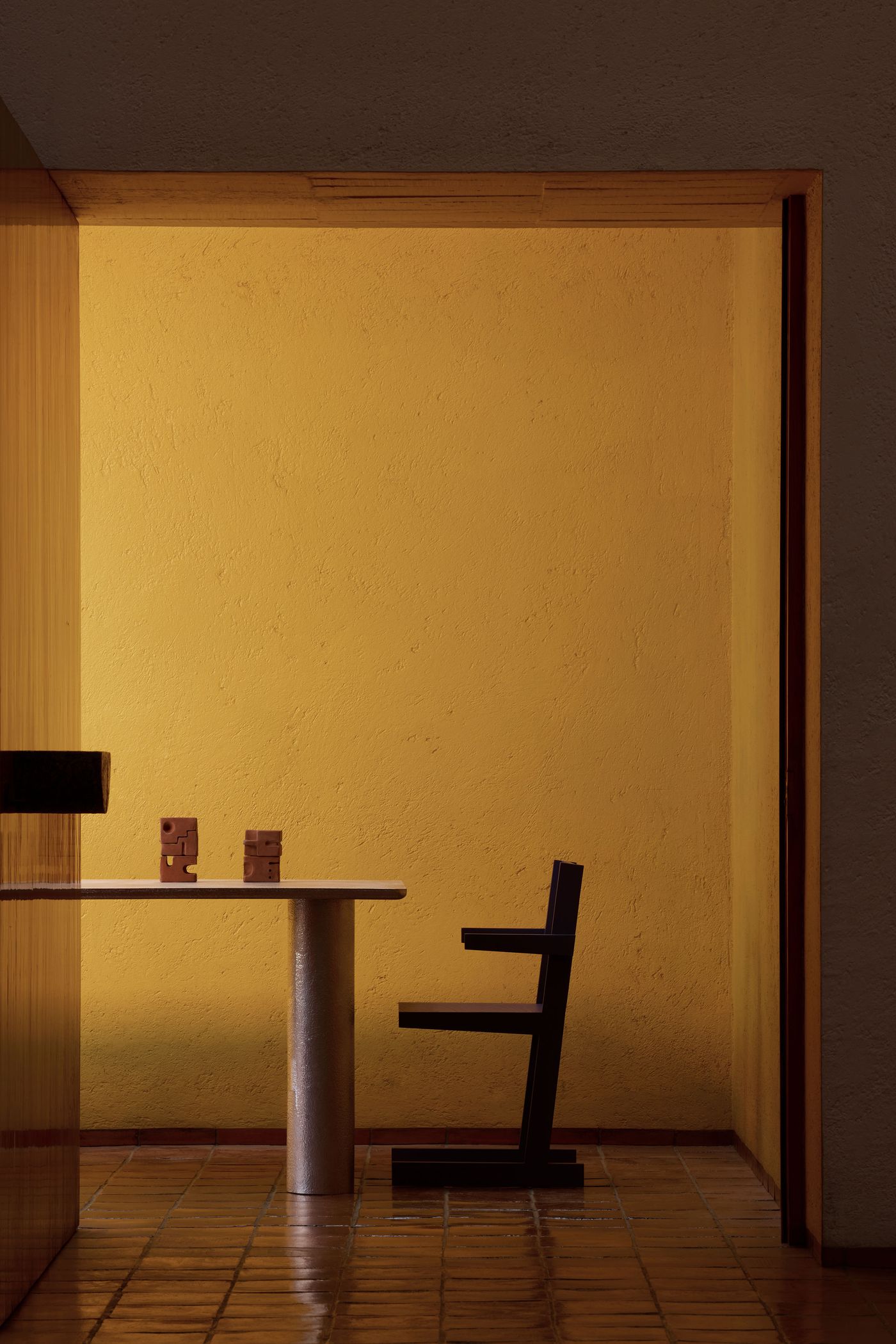
Photography and creative direction by Alejandro Ramirez Orozco.
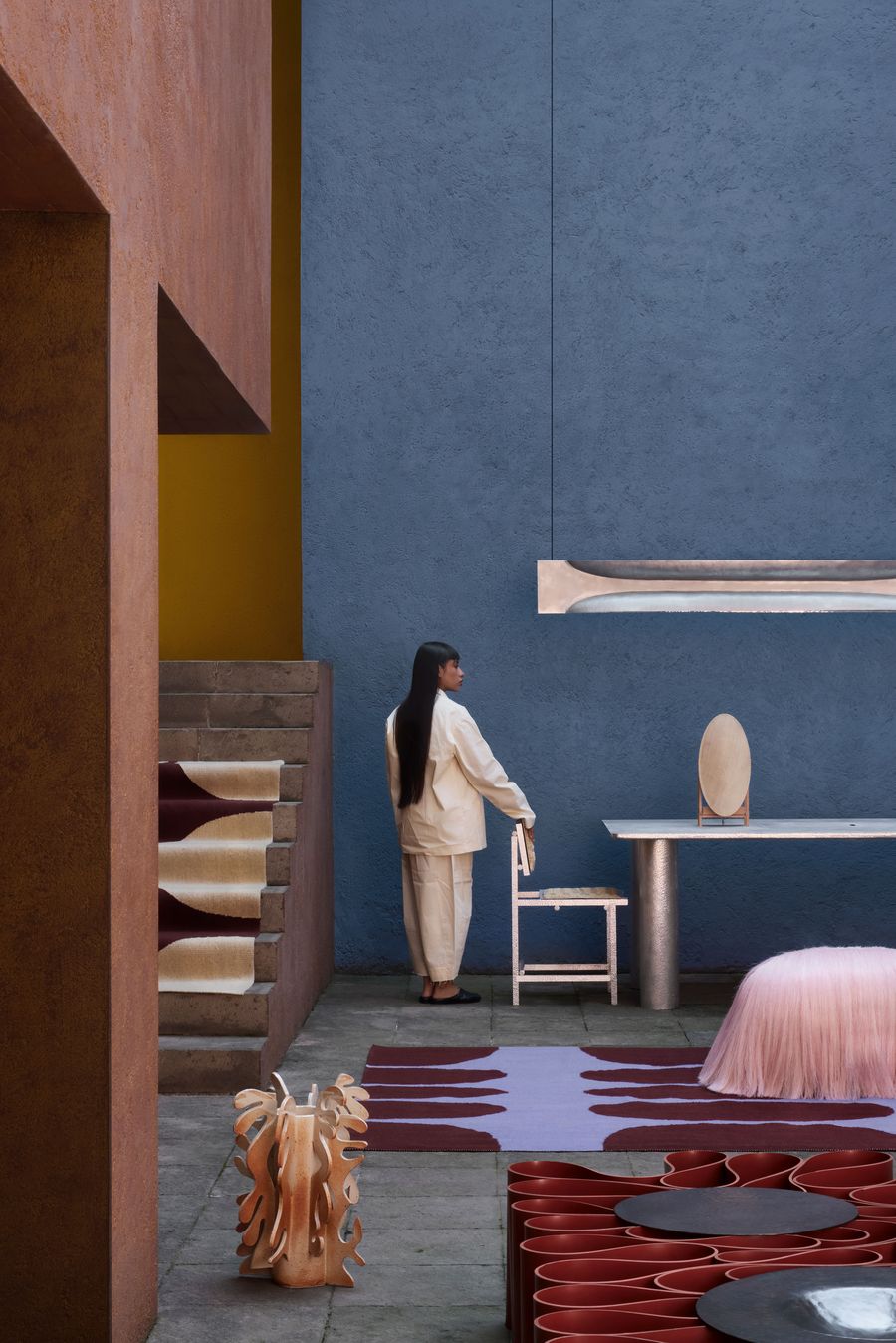
Photography and creative direction by Alejandro Ramirez Orozco.
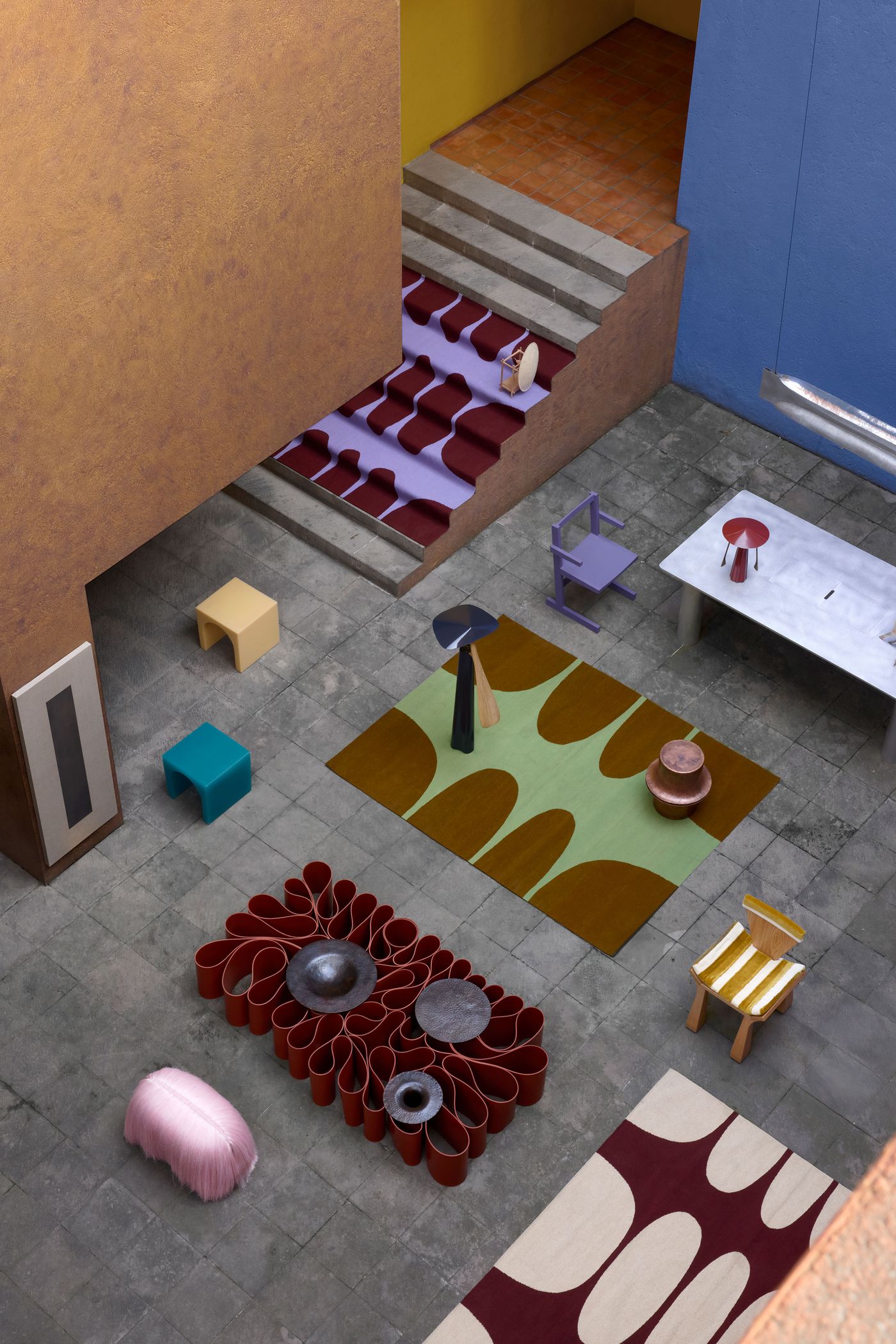
Photography and creative direction by Alejandro Ramirez Orozco.
The house dictates the visual rhythm, with its high walls, unexpected openings, and bold chromatic statements shaping the mise-en-scène. Ramirez Orozco has placed objects in various corners of the house—in the soaring living room, labyrinthine corridors, grand staircases, and of course, in the central atrium. Pieces such as Brian Thoreen’s surreal coffee table, built from folded red neoprene rubber sheets, Fernando Laposse’s furry bench, with its rich “mane” made out of raw agave fibers naturally dyed in an electric pink hue, and RRRES’ wool rugs introduce a playful language of curvaceous forms and vibrant colours that animate the house’s stark theatricality. On the other hand, more somber pieces are showcased including Manu Bañó’s hand-hammered pendant light and side table, made of aluminum and copper respectively, Ohla Studio’s Bauhaus-inspired lounge chair, and Héctor Esrawe’s grid-like metallic candle holder, echoing Attolini’s fusion of geometric purity and sculptural tactility.
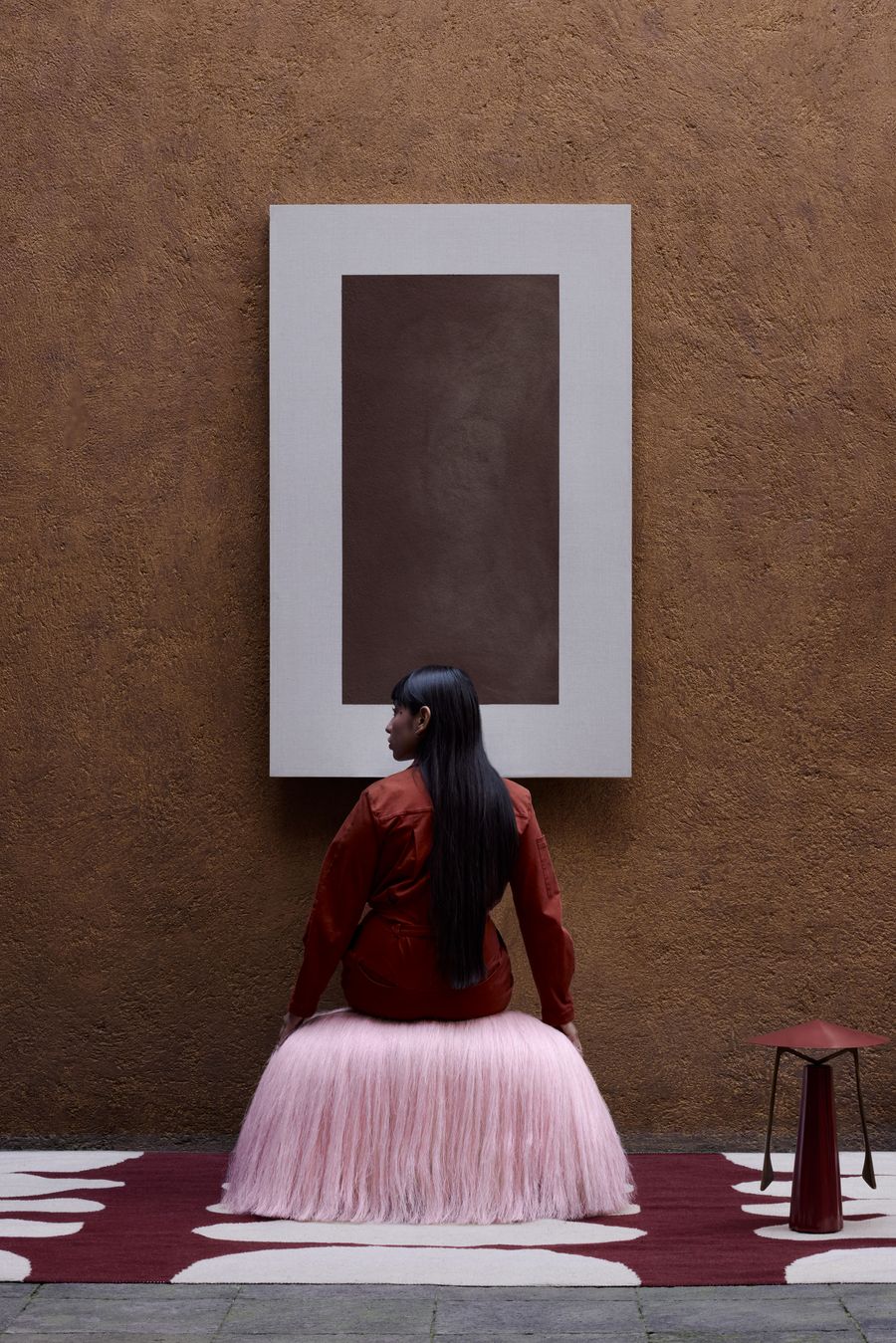
Photography and creative direction by Alejandro Ramirez Orozco.

Photography and creative direction by Alejandro Ramirez Orozco.
One of the most striking elements of the series is the presence of a human figure. Dressed in neutral hued geometric garments, the model subtly echoes the architecture itself—blurring the lines between subject and space, and dweller and dwelling. Combined with his use of a telephoto lens that flattens perspectives and accentuating contrasts and textures, Ramirez Orozco’s photographs make what Attolini always intuited visible: that architecture is not just an enclosure but a vessel for life and movement.
More than a photographic series, the project is a case study in how architecture, design, and photography can converge to create new narratives. It revives a little-known architectural landmark, framing it as a living entity rather than a relic, while simultaneously giving contemporary designers a stage that enhances and recontextualizes their work. This is the kind of creative synergy that breathes new life into forgotten spaces and once again affirms the power of design in not just shaping objects but in how we see the world around us.
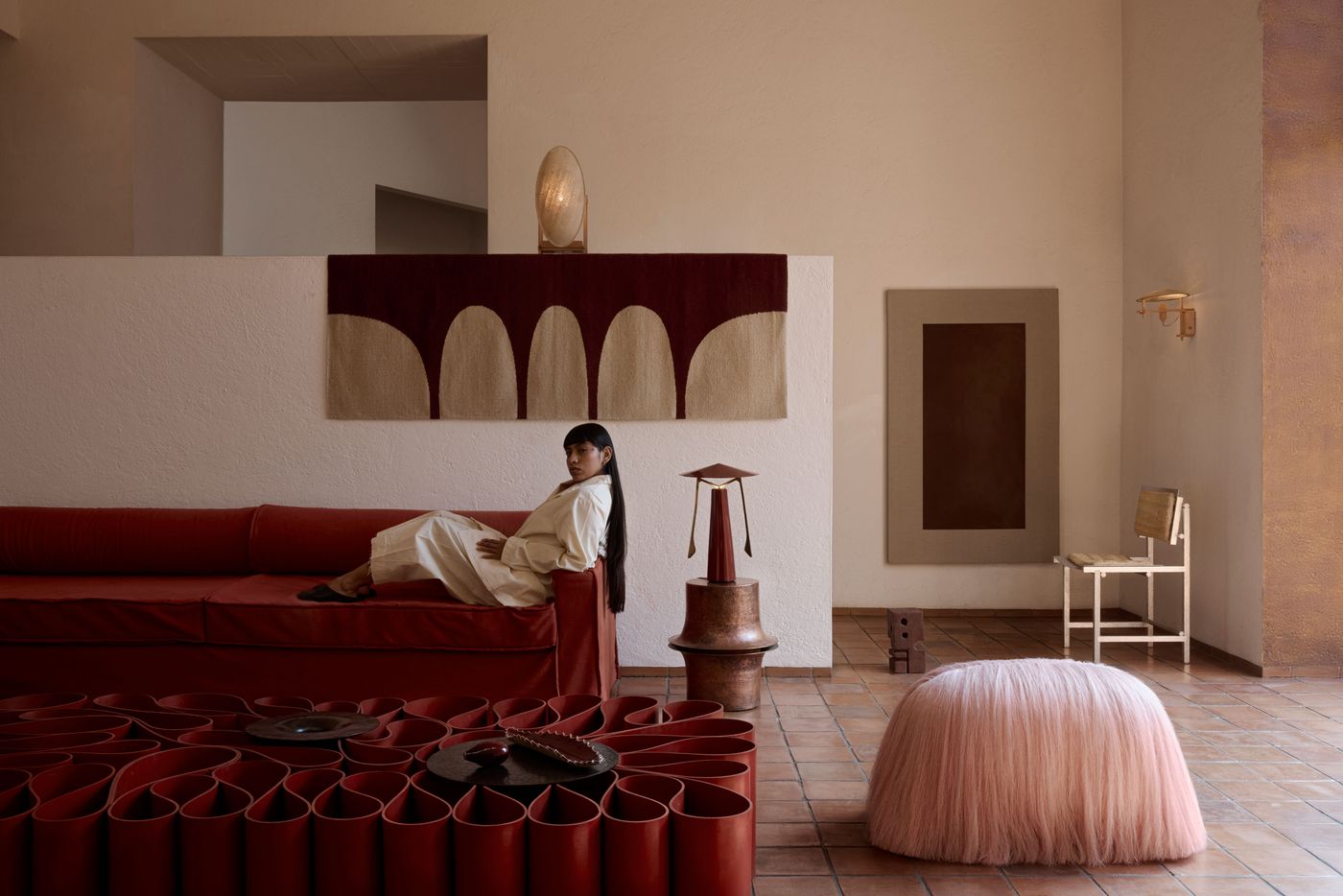
Photography and creative direction by Alejandro Ramirez Orozco.
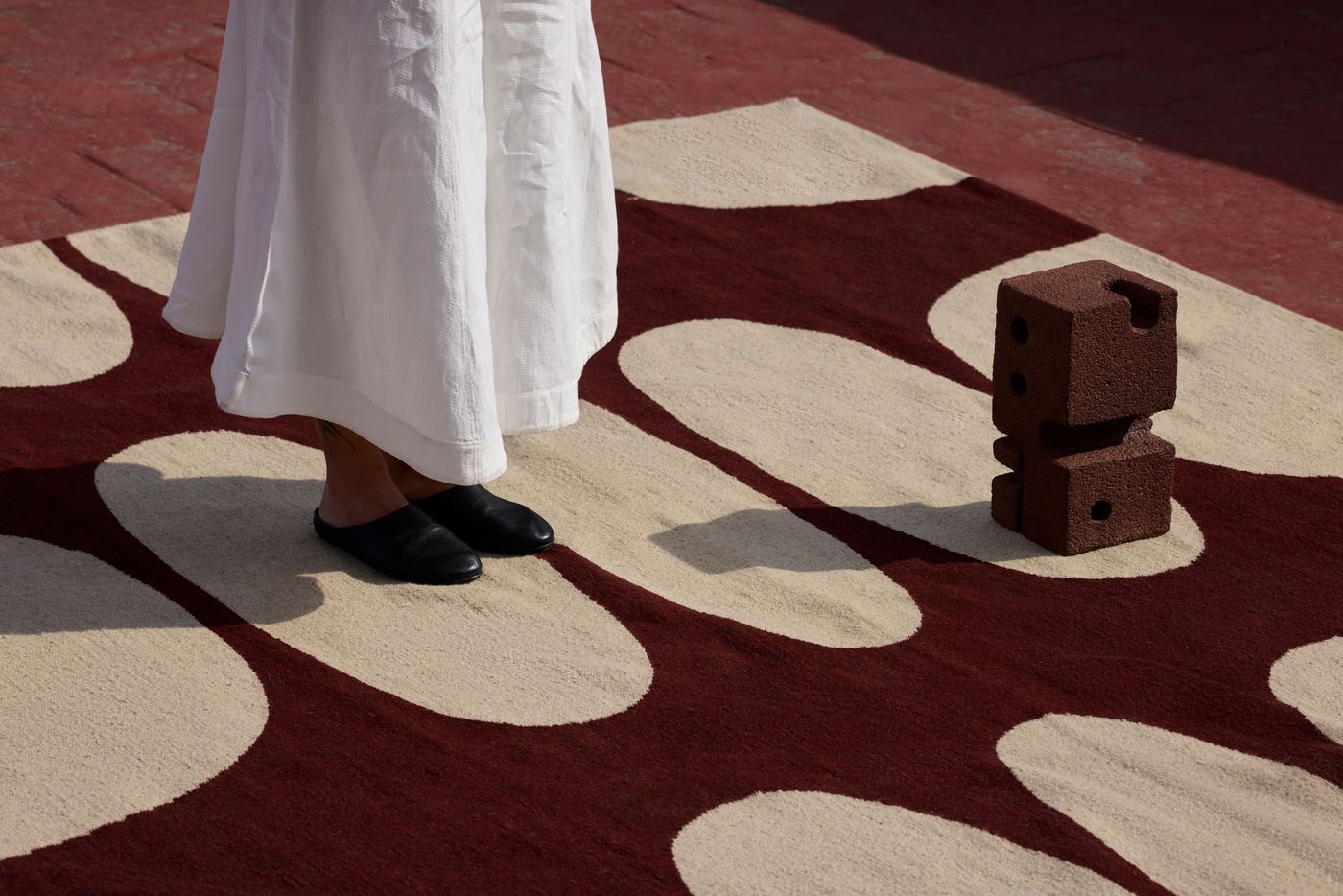
Photography and creative direction by Alejandro Ramirez Orozco.

Photography and creative direction by Alejandro Ramirez Orozco.
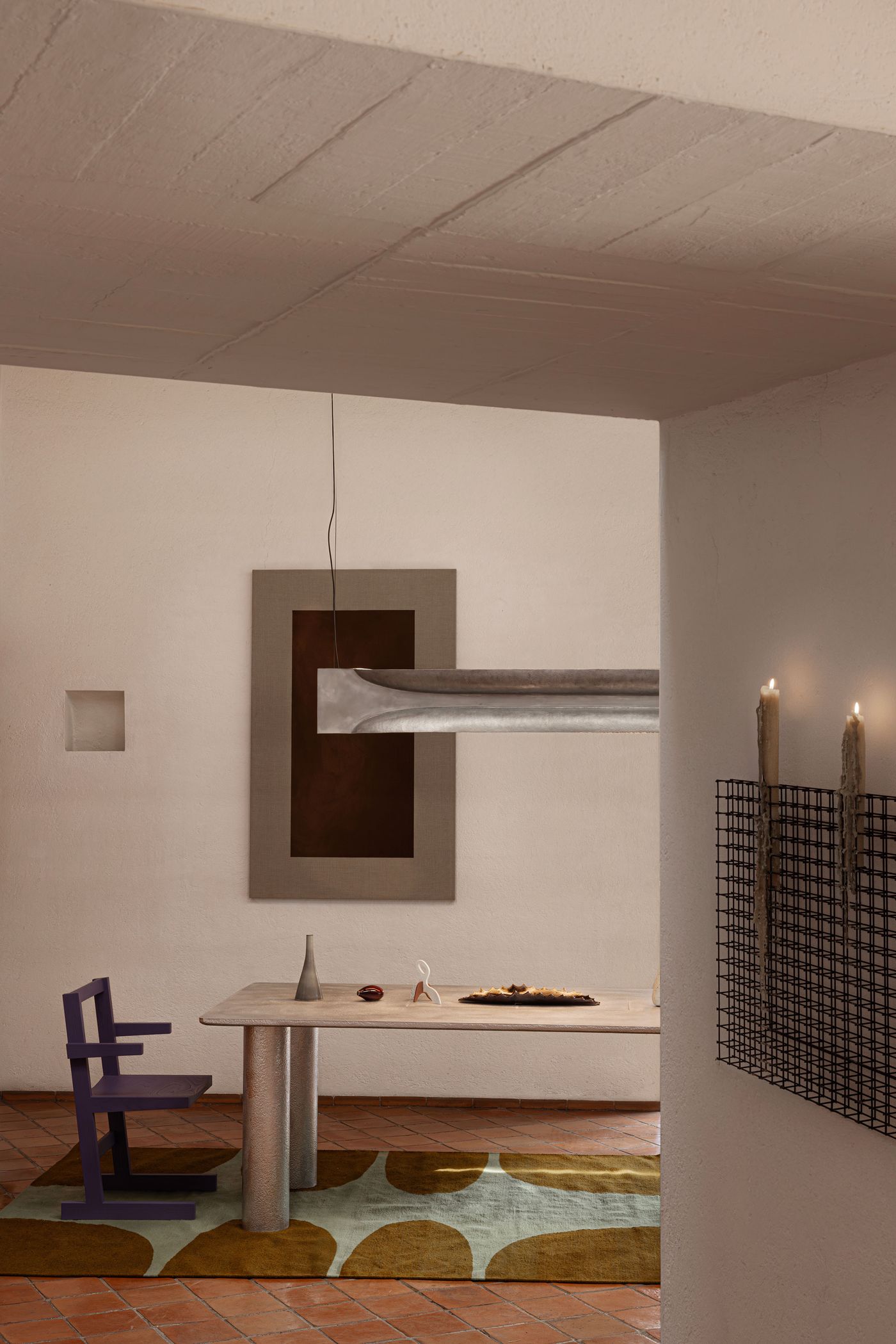
Photography and creative direction by Alejandro Ramirez Orozco.
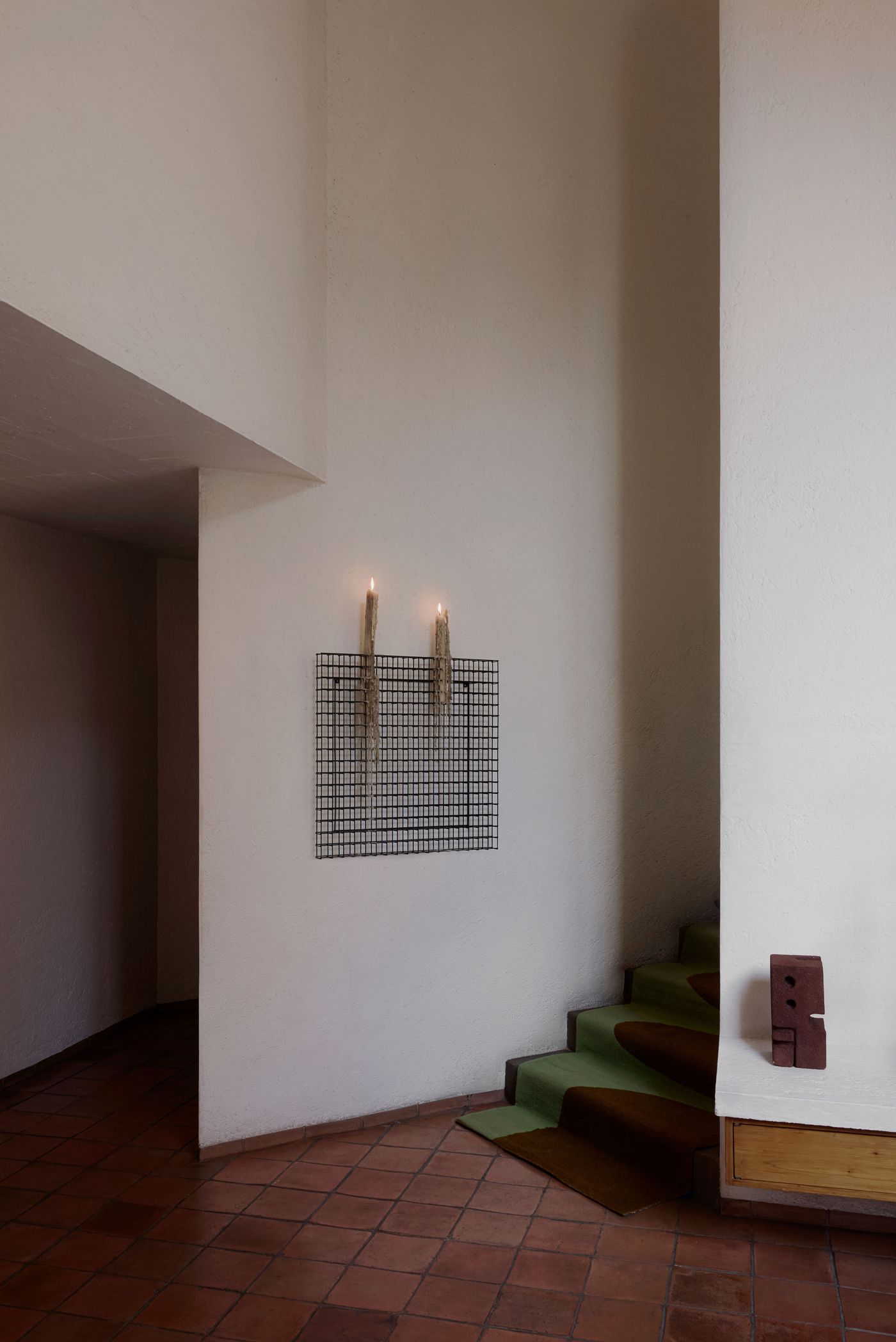
Photography and creative direction by Alejandro Ramirez Orozco.


